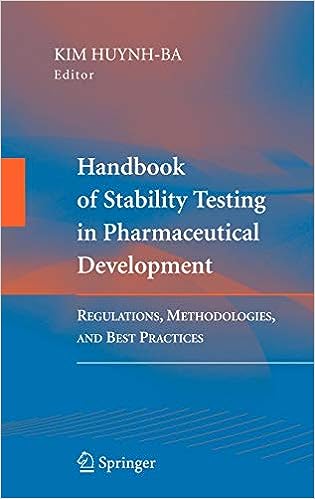The “Handbook of Stability Testing in Pharmaceutical Development” is an invaluable resource for anyone involved in the pharmaceutical industry. This comprehensive guide provides an in-depth analysis and practical advice on stability testing, which is a critical aspect of drug development.
The book is divided into different sections, each focusing on a specific aspect of stability testing. It begins with an overview of the regulatory guidelines and requirements for stability testing, ensuring that the reader is well-versed in the necessary guidelines to adhere to. This sets a strong foundation for the subsequent chapters.
The authors then delve into various aspects of stability testing,
What sets this book apart from others
in the field is its emphasis on practical applications. The authors provide real-life case studies, examples, and practical tips to help the reader apply the principles discussed. This ensures that the information is not only theoretical but also actionable.One of the standout features of the book is its clarity and organization. The content is presented in a logical manner, making it easy to navigate and comprehend. The inclusion of tables, graphs, and figures further aids in understanding complex concepts.
Overall, the “Handbook of Stability Testing in Pharmaceutical Development” is an indispensable resource for professionals involved in pharmaceutical development, quality control, or regulatory affairs. Its comprehensive coverage, practical approach, and clear presentation make it a must-have for anyone seeking to enhance their knowledge and skills in stability testing.

